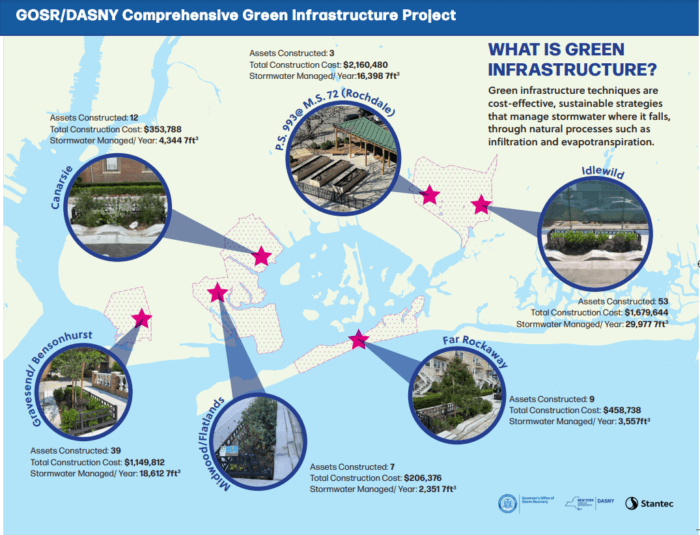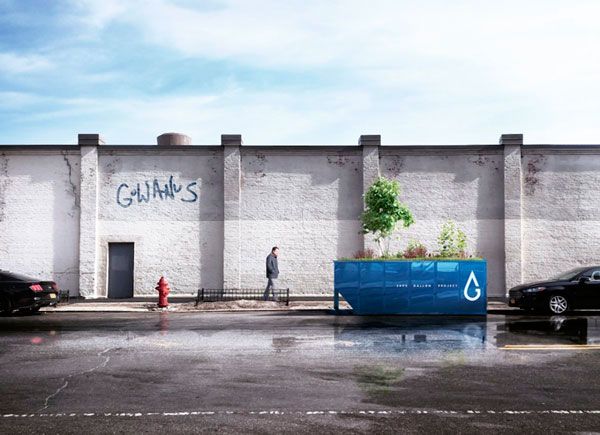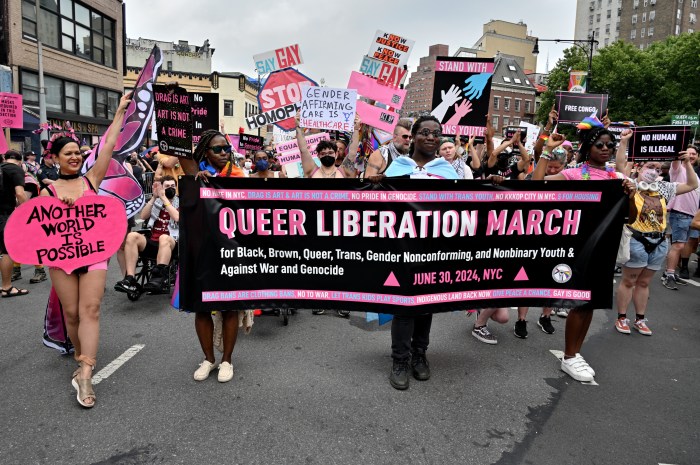Governor Kathy Hochul announced the completion of dozens of new bioswales and rain gardens in southern Brooklyn, aiming to prevent excess flooding in the precarious coastal nabes.
The Governor’s Office of Storm Recovery spent $13 million on 123 new green infrastructure items in southern Brooklyn and Queens, specifically in neighborhoods that were devastated by flooding during Hurricane Sandy and are at particularly high risk in the future as the effects of climate change become entrenched. Gravesend received 39 new rain gardens, while Canarsie got 12 new gardens and Flatlands, Mill Basin, Bergen Beach, and Gerritsen Beach got 7.

“We remain laser-focused on funding projects that support our nation-leading climate goals,” the governor said in a statement. “This $13 million green infrastructure project in Jamaica Bay will reduce pollution, mitigate flooding, and enhance resiliency in the face of stronger storms. New York will continue to implement forward-thinking policies and make strategic investments to combat the effects of climate change.”
Rain gardens and bioswales are roadside curb plantings that are constructed with street-level levees that flow directly into the gardens; during storms, rainwater that otherwise would flood the streets or end up in sewers is diverted to the gardens, where the water is absorbed by the soil, enabling greenery to grow. The effect is to reduce the impacts of flooding, prevent overflow in the sewer system, and also to beautify the streetscape; as such, they have become an increasingly popular street design choice worldwide.
“Green infrastructure helps New Yorkers both mitigate climate change and adapt to its effects,” said Katie Brennan, Executive Director of the Governor’s Office of Storm Recovery. “We are proud that this innovative project is making historically underrepresented communities in Brooklyn and Queens more resilient and better able to withstand future storms.”
The green infrastructure was seen as particularly necessary in waterfront neighborhoods where retrofitting buildings and other infrastructure to be more storm-resilient would be a challenge, according to the governor’s office. The new infrastructure was specifically placed in neighborhoods that are particularly vulnerable to the effects of climate change and have experienced periodic flooding over the nearly ten years since Sandy. Most of the roads are also critical evacuation routes for major storms and other natural disasters.
“Too many communities throughout New York City, including those I represent, have long faced underinvestment for green infrastructure,” said New York City Council Speaker Adrienne Adams. “Installing new bioswales, rain gardens, and other structures will not only mitigate flooding and improve water quality, but contribute to the fight against climate change. These critical investments are long overdue, and I am thrilled that the Governor’s Office of Storm Recovery has completed this $13 million project that will benefit our communities.”























